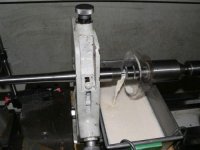H
huntinco
Guest
I asked this in the general forum and got no response, hopefully I will find some help here.
I really enjoy all the info you guys post here. I have slowly been gathering up all the right tools, over the last year, in hopes of one day making a few guns on my own. Now my question; what is the best self-centering reamer holder, and what do you guys think about the PTG action jig?
Thanks in advance,
Justin
I really enjoy all the info you guys post here. I have slowly been gathering up all the right tools, over the last year, in hopes of one day making a few guns on my own. Now my question; what is the best self-centering reamer holder, and what do you guys think about the PTG action jig?
Thanks in advance,
Justin



